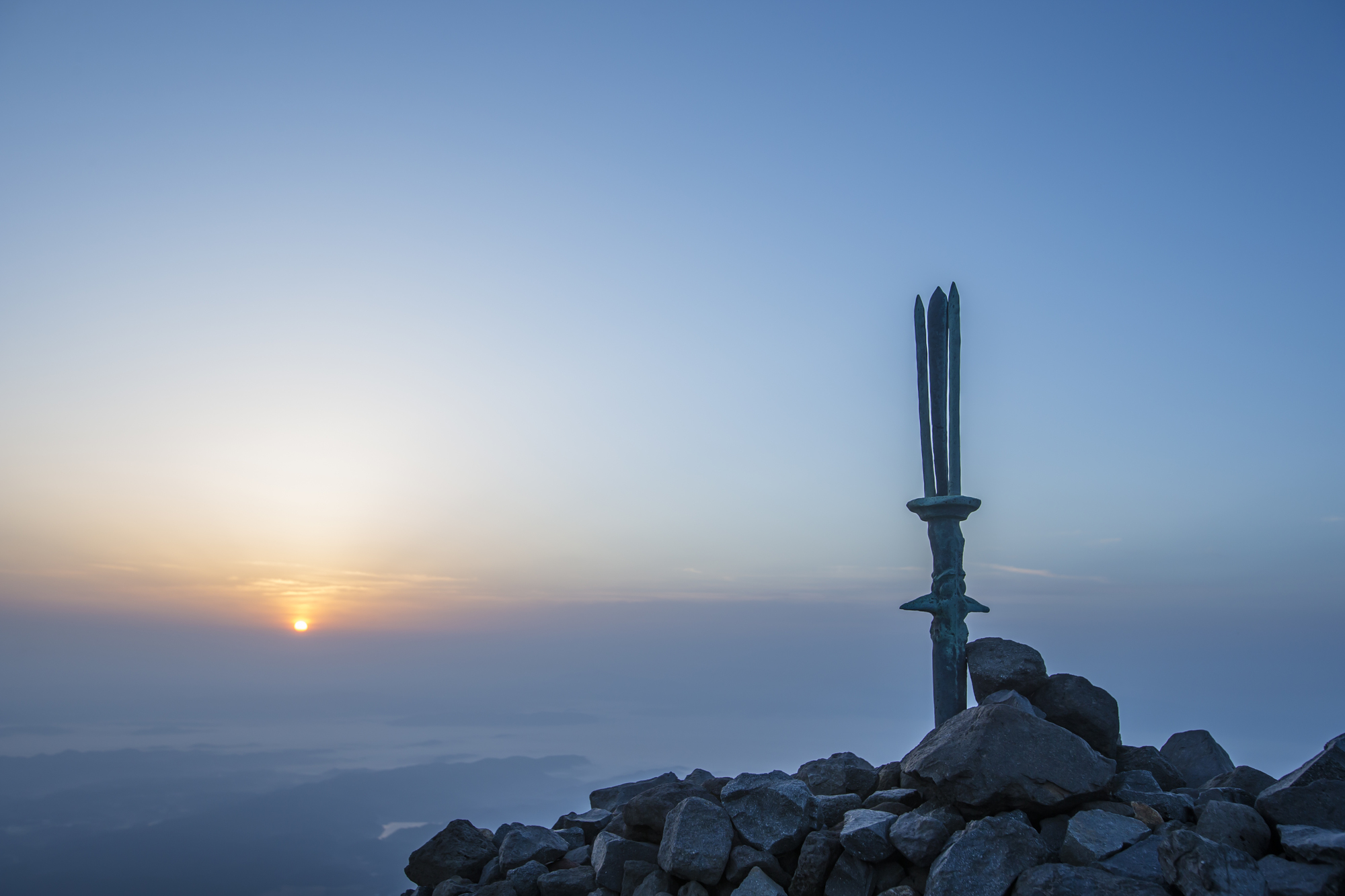The Myth of Tenson Kōrin
— On the Origins of Japanese Imperial Family —
Exploring the Kojiki
Updated on Dec 10 2018
Japan’s oldest book, the Kojiki. It dramatically illustrates the history of Japan from the beginning of the world, the appearance of the deities, to the Imperial succession. Behind each impressive episode, there exist numerous “mysteries” that are yet to be solved even today. By exploring each, we will think about the origin of Japanese beliefs and culture.

The peak in Takachiho, one of the places where it is said that Hononinigi descended
Himuka: A suitable location for deities to descend
The myths in the Kojiki explain the origins of gods all the way to the Imperial line, but one myth about Tenson Kōrin (the descent of Amaterasu-Oomikami’s grandson, Hononinigi) is at the core. It is said that the deities Izanaki and Izanami created the Japanese archipelago, but it was Ookuninushi who planned and developed the country.
Amaterasu-Oomikami negotiated to make Ookuninushi give up the earthly realm, allowing her grandchild, Hononinigi, to descend as the ruler.
In this myth, Hononinigi descended onto Mt. Kujifuru in Takachiho Town, Himuka Province (modern-day Miyazaki Prefecture), located in the Tsukushi district of modern-day Kyushu. It remains unknown why Hononinigi descended there, but it is possible to understand the origin of the location’s name. This location was chosen as a suitable place for the descent of the solar deity, as “Himuka (Hyuga) ” in Japanese means “the place where the sun goes.”
In addition, Hononinigi, the spirit of rice ears, was said to land on the crest of an “ear.” Thus we can see one aspect of Japanese mythology where fertility in agriculture is realized via heavenly descent.
Interaction with neighboring countries as portrayed
in Japanese mythology
Myths in which deities descend onto mountaintops are widely seen in the founding mythologies of ancient East Asian regions, such as the Korean Peninsula.
According to the founding myth of Korea’s ancient Kaya confederacy, which had a thriving interaction with ancient Japan, the first ancestor was born from an egg that fell from heaven onto a mountaintop. However, the name of the mountain is “Kujibon,” which is similar in pronunciation to “Kujifuru” in Takachiho.
Seeing as there were cultural exchanges between the two lands, it is only natural to assume that myths and legends were exchanged. Although tales regarding the mythologies of the Korean Peninsula were written much later than the Kojiki, it is not possible to say which had influence on which, as the origins of these myths are both considerably ancient.
The mysterious myth of Tenson Kōrin
Incidentally, the deity that descended to the earthly realm is not the child but the grandchild of Amaterasu-Oomikami. In the case of the Kojiki, the plan was for the children of Amaterasu-Oomikami to descend, but this was later changed to the grandchild, upon the grandchild’s birth.
There are many opinions on why the switch was made and why it was the grandson that was chosen to descend. Negotiations with Ookuninushi concerning the transfer of the earthly realm were held in Izumo, but it remains a mystery why Tenson Kōrin occurred in Kyushu. Indeed, many mysteries remain surrounding the mythologies in the Kojiki.
-Kokugakuin University has been selected “as a place for the promotion of the study of the Kojiki” by the private university branding project of the Ministry of Education in 2016.-

published in The Japan News on 26/11/2018
Masahiro TANIGUCHI
Research
Japanese literature of ancient times (Kojiki, Nihon-shoki, topography)
Papers
“The Old Man Says” in izumono-kuni-fudoki(2017/05/10)
Tatenui County and Mount Kannabi in Izumonokuni-fudo-ki : Reading What the Genius Says(Reading)(2009//)

